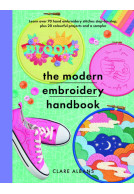The Moon (ePub)
A Beginner’s Guide to Lunar Features and Photography
Imprint: White Owl
File Size: 12.8 MB (.epub)
Pages: 128
ISBN: 9781526760593
Published: 17th September 2020
| Other formats available - Buy the Hardback and get the eBook for £1.99! | Price |
|---|---|
| The Moon Hardback Add to Basket | £25.00 |
A practical guide aimed at beginners interested in learning about the Moon and how to image our closest satellite neighbour. The book contains the complete photographic process including equipment, settings, capture techniques, stacking and image processing, each of which is vitally important to producing a good image. The information is laid out in a visual and easy-to-understand format so that even the dark art of image processing will not seem quite so daunting. There are many high-quality colour photos of the Moon to help you learn about different lunar features and a list of 100 lunar targets identified as a challenge for you to find. All the targets have been captured by the author who provides a brief description of each feature and where it is located on the lunar surface. You will be surprised to discover the fine level of lunar detail which you can see from your back garden and once you start imaging, you will realise there is more to the Moon than meets the eye.
Rating: 5 out of 5 stars
NetGalley, Kaitlyn Arford
If you’re into space and photography, this book is for you!
⭐⭐⭐⭐⭐
How it Works, January 2021
Although this book uses the Moon as a starting point, the wisdom it imparts can be applied to many different areas of astrophotography, including how to use planetary imaging preprocessing for crystal-clear images. Whether you’ve never picked up a camera before or you’re looking to get a few tips and tricks, this book is a great addition to your photography library.
I have always been fascinated by the moon and have tried, rather unsuccessfully, to capture images of it in the past. This book makes it much clearer to understand what sort of equipment is needed to get good photographs and also what features to look out for on the moon itself. Looks like a bit of a steep learning curve computer wise, but I am willing to give it a go.
Amazon Customer, Jayne
I know what I will be requesting for Christmas now ... Looking forward to happily setting up my camera.
Review here
IMAGING MUST-READ ⭐⭐⭐⭐⭐
Mary McIntyre, BBC Sky at Night, June 2020
This book is a must-have for anybody interested in lunar photography. If you are a beginner, this is the only lunar observing book you will ever need, but even experienced observers will learn something from it, and will wish this book had existed years ago.
The Moon: A Beginner’s Guide to Lunar Features and Photography is a valuable read and resource for those looking to photograph the moon, and those looking to examine and explore the work involved in getting those photographs. The explanations are well done, and the information was accessible. The equipment, skills, and techniques are well described and the book offers solid insight for those interested in expanding their skill set. I have to admit, I have always been more interested in the images themselves than the ability to take pictures myself. However, I liked learning about what goes into taking the pictures that have also fascinated me. I think those interested in learning more about the doing, rather than just enjoying their hard work on our behalf, will get the most out of this book.
NetGalley, Sharon Tyler
Rating: 5 out of 5 stars
NetGalley, Annie Buchanan
Author James Harrop is an experienced photographer and he provides quite a lot of specific information for readers concerning equipment, atmospheric conditions, and other criteria to reproduce or capture their own images.
The book itself follows a logical and accessible format. From the general photography terms and equipment he moves on to more specific detail of DSLR imaging, mobile phone images, sensors and image resolution, Sharpcap, stacking, image processing in Photoshop, composite images in ICE, and lunar features (with a cool checklist to tick off seen/imaged features). If those terms don't mean a lot, it might be reassuring to know that I am a complete newbie when it comes to photography and the author takes pains to make the concepts painless and understandable. This really is a mostly beginner friendly guide to capturing images better than I had thought possible with the equipment I had. I also liked the way the author used actual screenshots with specific programs to guide the reader through some of the software features. (Click here. The interface should look like this. Do this step, then that). I also liked the way technical terms are defined in highlighted sidebars on the pages on which they appear. It makes it *so* much easier than looking things up at the back of the book.
Well written, very interesting, and night-time astral photography is a hobby anyone can do at a beginning level (whilst social distancing). I gained an appreciation for the subject reading the book. This would make a superlative selection for astronomy fans, photography hobbyists, or anyone looking for a neat way to use up some insomnia hours. It's all ages accessible and virtually free to start, since everyone has a mobile phone.
Five stars. Quite comprehensive.
A practical guide aimed at beginners interested in learning about the Moon and how to image our closest satellite neighbour. The book contains the complete photographic process including equipment, settings, capture techniques, stacking and image processing, each of which is vitally important to producing a good image.
NetGalley, Victoria Caswell
If you are looking for a book to get started on this, this is a really good book. Part photography book, part instruction manual, this book really gives you a place to get started on some of your own lunar activity... I do feel the information is really informative and makes for a good primer in getting great photos and taught me alot.
Accompanying the writing as pictures of cameras but also of course, the moon. What I do appreciate is the variety of shots from different cameras that allow you to see the instructions in the physical particularly the section on using mobile phone cameras to take pictures - this was very informative and I used the information in this book to take pictures myself and will continue to. The photos really are so high quality throughout.
A really informative book that teaches you all you need to know about lunar photography, I’d recommend it for someone just starting out like I was!
The book is very interesting and pertinent for those interested in astronomy and by lovers of the moon (which is my case) and the universe as a whole. The images are beautiful and the content, aggrandizing. Even though the theme is scientific in nature because it is a nonfiction book, the way it is approached and the language used is accessible to any pubic, thus expanding the target audience of the work. I really enjoyed reading.
NetGalley, Karina Teíse
You know when there's a full moon, you get really excited and try to take a photo of it? And when you take that photo, it turns out to be less than impressive and incredibly subpar? This book fixes all of that for you. Now, granted, it's not for the average iPhone photographer. This is for dedicated professionals, or even hard-core hobbyists. You definitely need to have at least a passing interest in photography in order to get any benefit from this book at all. It covers an incredible amount of detail for all the special considerations you need to make while photographing the moon. Any photographer interested in science or even night photography would love this book. I especially loved the detail it goes into on the geography of the moon's surface. The different craters and fields, and how to make them pop and detailed in your photos. The moon itself is incredibly stunning and this book tells you how to capture it. I did think that this would be more of a coffee table book with mainly photos of the moon and the odd technical specification on how the photographer achieved it, but that's not what this book is about at all - if possible, it's even cooler.
NetGalley, Erin Benedictson
About James Harrop
James Harrop is an experienced astrophotographer with a primary interest in the Moon. After years of studying and photographing the Moon, he has built up a wealth of knowledge and experience in lunar photography. His exceptional capture and image processing techniques can be clearly seen in his high-quality images. The use of colour makes his style unique. One of his main goals is to inspire others to take up astronomy and astrophotography by sharing his practical knowledge and easing the journey for anyone who wants to start out in this technically daunting subject. He observes and images the Moon from his home in West Yorkshire where he lives with his wife, children and dog.















